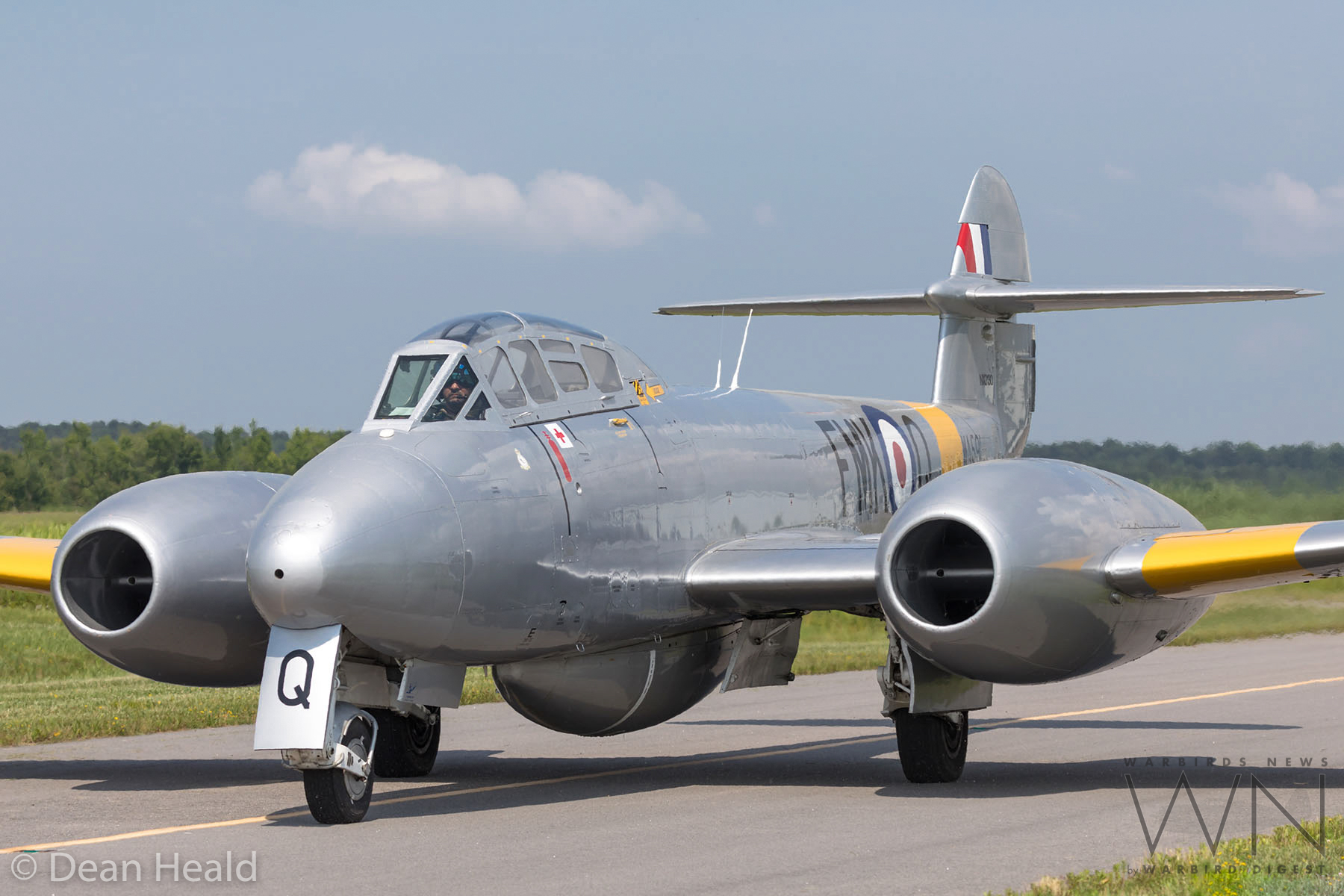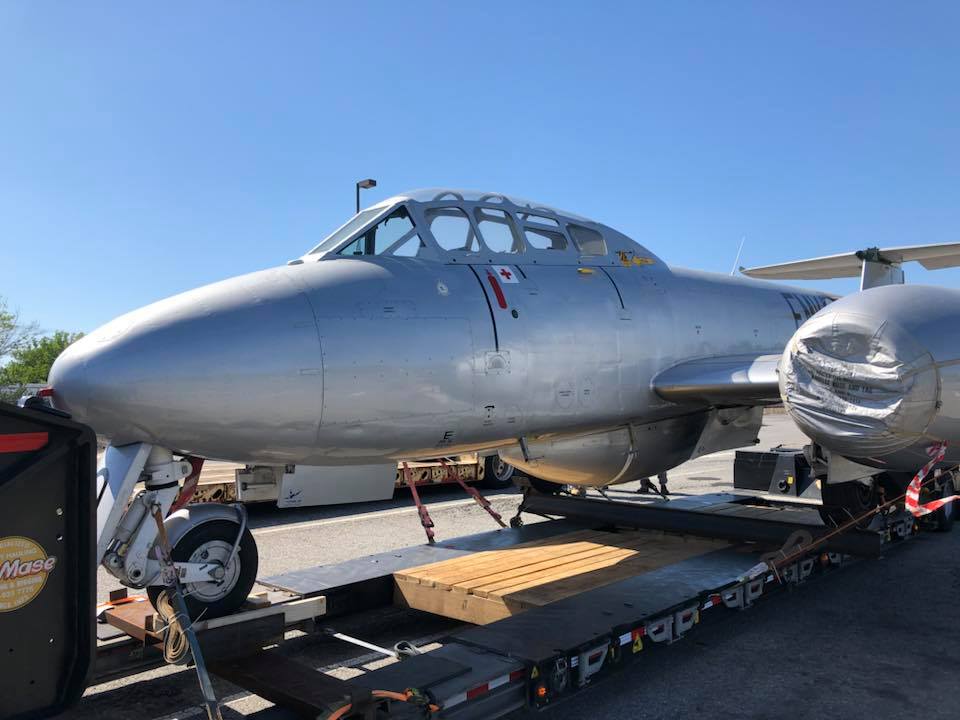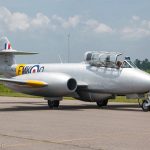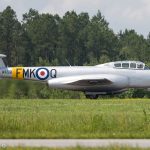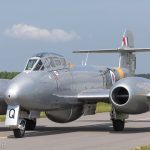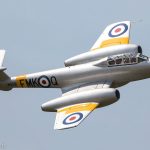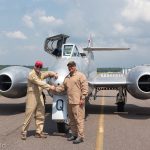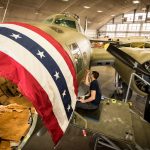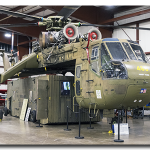A Gloster Meteor has flown again in the USA for the first time in decades, with the initial testflight of Gloster Meteor T.7 WA591 at Hampton Roads Executive Airport yesterday afternoon. The World Heritage Air Museum, based at City Airport in Detroit, Michigan acquired this vintage British jet from her previous owners, the Classic Air Force Trust in Coventry, England. As most readers will know, the T.7 is a tandem-seat trainer variant of the Meteor jet fighter, the first operational Allied jet of WWII famous for its wartime exploits knocking down German V-1 cruise missiles.
WA591 rolled off Gloster’s production line at Hucclecote in mid-1949. She served with the Royal Air Force at various domestic training establishments including Stradishall, Driffield, Finningley, and the College of Warfare at Manby, before retiring from flight to become a ground instruction airframe with No.5 Maintenance Unit at RAF Kemble in 1965. She closed her RAF service as a gate guard at RAF Woodvale, near Liverpool, but eventually ended up on the gate at the now-closed British Aerospace Factory at the former RAF Woodford airfield by the mid-90s. An enterprising fellow named Collin Christopher Rhodes acquired her in 1993 for restoration to airworthiness with The Meteor Flight. Following 16 years of hard work in cramped conditions at Yatesbury, and a lot of capital investment, WA591 took to the skies again at Kemble on June 14th, 2011, when she became the oldest active jet aircraft in the world. She subsequently joined the Classic Air Force and appeared on the air show circuit a number of times in the following years, until Classic Air Force’s primary owner, Mike Collett, decided to part with the bulk of his fleet of airworthy historic aircraft in 2015.
Getting WA591 to the USA took about a year to sort out, but she arrived at Norfolk, Virginia on April 27th, after an ocean voyage from Liverpool. After clearing customs three days later, the partially disassembled airframe was trucked the short distance by road to Hampton Roads Executive Airport, where she went into a hangar for reassembly.
With assistance from volunteers, the team from WHAM had the Meteor’s wings back on by May 1st. She was a whole aircraft again a few days after that, and then the sometimes problematic process of FAA Certification began. The Meteor’s last flight prior to her arrival in the USA, took place in late March this year (a short hop from Coventry to Liverpool), and she had always been maintained in immaculate condition following her nearly two-decades-long restoration in the UK, so it wasn’t surprising that she received her airworthiness certificate in fairly short order on June 9th. After some preparations and taxi tests, the aircraft flew for the first time at around 3:30pm on Monday, June 18th. This was a marvelous moment, and one to be much celebrated. Dean Heald sent WarbirdsNews some great photographs capturing the event, which we now share with you here.
According to Dean, following its test flight the Meteor flew to Elizabeth City in North Carolina. She will apparently stay in Elizabeth City until Thursday, and then begin making her way across country to her new home in Michigan. WA591 is scheduled to attend EAA AirVenture Oshkosh 2018 this July, alongside two of her contemporary British stablemates from the World Heritage Air Museum, deHavilland Venom FB.54 (N747J, ex-Swiss AF J-1747) and Vampire T.55 (N115DH, ex-Swiss AF U-1206), where the trio will help celebrate the Royal Air Force Centenary. We look forwards to seeing the Meteor on the air show circuit for many years to come, and congratulate her owner, Marty Tibbitts and his World Heritage Air Museum for their foresight in bringing this rare treat to American skies. WarbirdsNews would particularly like to thank photographer Dean Heald for his marvelous contributions to this article.







